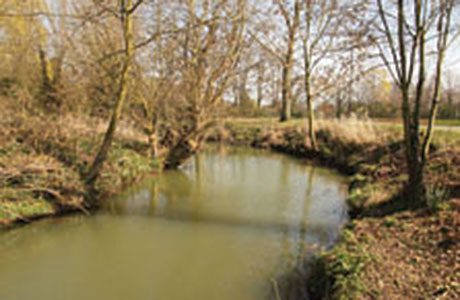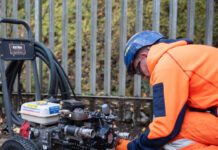

THE River Welland in Market Harborough has been the focus of recent restoration work, with an environmental project led by the University of Leicester and the Welland Rivers Trust (WRT) aiming to turn the river “from a near-lifeless ditch into a living ecosystem”.
The focus of the ‘Welland for People and Wildlife’ project was to energise the low flow of the river without affecting the high flow capacity of the water course.
To achieve this 6 weirs were removed, berms were built to create a meandering pattern, pools were dug and riffles created with gravels in the shallows between the berms.
With the removal of the weir barriers, fish and eels are now freer to move throughout Market Harborough, while a variety of deep spaces for fish to hide are now available, along with quality shallows ideal for spawning.
Professor David Harper from the University of Leicester and Lead Scientist to the project said: “The Welland is a beautiful river in those very few places that were not destroyed by river engineers in the 1960s. They turned 95% of our lowland English rivers into monotonous, lifeless ditches merely for water carriage.
“The Trust is immensely proud to have been able to turn 1.8 kilometres of near-lifeless ditch into a living river ecosystem again for people to enjoy once more, as their grandparents did.”
During low flows, the river now has a much more varied pattern with faster flowing shallows and slower deep sections. This provides unique conditions to form a variety of different habitats and dissuades single species of plants from overgrowing and choking the channel. This will also have an overall positive impact on the water quality in the river.
This reintroduction of habitats previously missing through Market Harborough will encourage a greater diversity of aquatic animals, with more species of aquatic invertebrates, which will benefit insects, birds, and mammals further up the food chain. Already, birds like wagtails which used to be rarely-seen through the town, are foraging along the river edges for flies.
Peter Barham, Project Manager, added: “The people and community groups of Market Harborough have been really active in contributing towards the transformation of the river through the town centre; we are proud to be associated with them. The District Council supported our ideas and shared our vision throughout; the contractors who put our designs into reality were brilliant.”
A public meeting will be held in Spring 2015 to discuss the restoration works and the WRT invites the community to attend and to give their opinions or pose any questions they may have about the restoration or the Trust. The WRT can be contacted any time via www.facebook.com/WellandTrust or Twitter @WellandTrust





